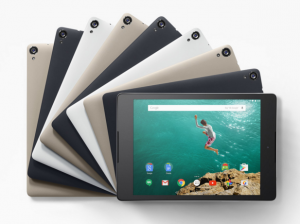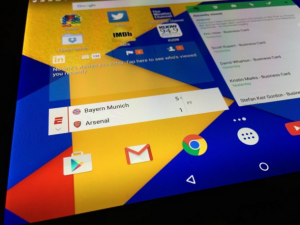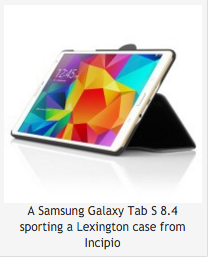
Why Google Needs to Make its Own Phones, Tablets and Chromebooks
Apple controls its destiny, and increasingly, Microsoft is choosing to control its Windows legacy by making hardware, despite the consternation of partners.
With Marshmallow, despite the silliness of the name, Google has shipped an operating system that is highly competitive with Apples iOS, and differentiated enough to offer consumers and businesses a clear choice. The hardware that runs Android, however, is a hot mess, and one that won’t get cleaned up unless Google takes control. The perceived competitive advantage of an open operating system that can be offered on a wide variety of hardware comes into even sharper contrast as Microsoft ships the Surface Book, a very innovative computer that, along with the Surface Pro 4, finally offers the market Microsofts own vision for what a device should look like running its operating system. And of course, that has been Apples approach all along, which has yielded it, in the most recent quarter, a surge in MacBook sales, a category that is failing elsewhere in the market.
While Apple, except for one short period in the non-Jobs era, has always controlled all aspects of its core hardware platforms, this is new for Microsoft, which did little more than offer reference designs, some of them made of wood, some of them, more elaborate, developed with the likes of Intel, Dell, AMD and HP. But many innovative designs never made it to market because the manufacturers were driven by price, cost, and as a component of those, supply chain management and channel. As much as Microsoft was accused of perpetuating its market influence with Windows, it couldn’t get manufacturers to make the boxes envisioned by its own engineers.
Google did have a horse in the hardware race, and that was Motorola, which they sold last year to Lenovo. Microsoft was reluctant to enter the PC market because it has built such a huge ecosystem of hardware partners beholden to Windows, and that was reportedly the reason that Google divested itself of everything but Motorolas patents.
Google needs to reconsider.
Microsoft is reaping the benefits of going head-to-head with Apple in hardware. It’s time to make this a three-horse race. That is why Google needs to make its own phones, tablets and Chromebooks.
In recent weeks, I have had the opportunity to evaluate the Samsung Galaxy Note 4, the Samsung Galaxy Tab S 8.4 and the Nexus 9, an HTC-build Android reference device. Here are six experiences that Google would improve if it owned the hardware. I also have a Samsung Chromebook, which fine as Chromebooks go, and unlike Android it receives updates regularly, despite it being a few years old. The following list focuses primarily on Android, but to make the brands universal and integrated, Google would need to own the entirety of the consumer and business facing hardware that runs Android and Chrome, and deliver consistent experiences across its hardware base.
OS Version
 A Nexus 9 is running Android 6, Marshmallow
A Nexus 9 is running Android 6, Marshmallow
Only the Nexus 9 is running Marshmallow (Android 6). The other two remain on Lollipop (Android 5). Android watchers try to keep track of what devices are getting which update and when (see this Gadetrend post). Most of it is speculation as even the manufacturers don’t know how long it will take them to migrate. It is unknown, for instance, exactly which Samsung devices will receive the update because all of the Samsung bloatware, including Touchwiz, that needs to work on the new OS ahead of shipping the bits. Not to mention carrier specific software that comes pre-loaded on many devices.
A bigger issue is older phones. Apple has gone out of its way to make iOS backward compatible with all but its oldest in-market devices, and to differentiate features that world only on the latest devices (like split-screen multi-tasking on the iPad Air 2 or the 3D Touch and photo updates that run only on the iPhone 6s and 6s Plus).
Google OSs in the market run from Froyo (2.2) to Marshmallow (6.0) (see statista.com for details). There are not hard and fast rules for what gets updates and what doesn’t. Manufacturers decide, and that leads to a lot of confusion, and some disappointment.
Google hardware would be connected to the software development cycle. Google would know what would work with what, and they could dictate the distribution timing. It would then be up to the device owners to decide if the upgrade was compelling or not, rather than learning that the device they own just isn’t important enough, or powerful enough, to get the upgrade.
The OS Configuration
I mentioned bloatware and that remains an issue in PCs and it is an issue with Android, for the same reason: one way licensed distributors differentiate themselves, and think they add value, is by putting software on a device.
It can be argued that Apple also ships bloatware, because those of use who don’t own an Apple Watch don’t need the Apple Watch app. But this is Apple bloatware, designed to make the user experience good should you decide to buy into the bigger device ecosystem – yes, it should be an optional download like Pages and Numbers, but these apps are very few on iOS). On Android, like Windows, much of the bloatware, outside of virus protection, was demo software that suggested, if not demanded, upgrades, or which added little value beyond the perception of a bundle of stuff that made the PC look more complete, perhaps the price more attractive. Dealers like Staples and Best Buy offer services to strip computers of this software before your take delivery, and Microsoft Stores offer Microsoft configurations that eschew it.
On the far side of this issues lies the Kindle Fire, which interestingly, is a device that really reinforces the point of this post. By taking the Fire out of the mainline of Android development, Amazon has taken control of the OS (I think it is still built around Android 5.2), branded it as Fire OS and, with the exception of curated apps allowed into the store, doesn’t look or feel like any other Android device on the market. Only Amazon makes the fire, and the good or the bad of those devices accrues directly to Amazons brand.
This approach to Android is similar to that of Microsofts embedded Windows, which is a third-party play for building an environment atop an OS that hides the OS. And that is fine. Google owning its own hardware would not stop them from licensing to the likes of Amazon as the core platform for a differentiated user experience. The problem, and Microsoft suffered from this until lately itself, is that if the manufacturer of the software doesn’t offer its own experience, its own vision for the OS, it loose the ability to create a credible narrative about how a tool is intended to be used rather than how it is deployed by firms with their own visions, motivations and practices (or lack thereof).
It can be argued that the reference platform implementations are the purist forms of Android. My Nexus 9 is a pretty clean build, but at the end of the day, the device, however says HTC (see brand loyalty) not Google.
Hardware Quality
First, I really really like the HTC Nexus 9. It is fast, the screen is crisp and responsive. The back of the case, however, is flimsy. With an Apple device, you buy a case to keep the outside world from damaging the precious device to keep it pristine, not to mention to protect your investment. On many Android devices people buy a case so they feel like they wont damage the internals of the device while using it, which sometimes feel dangerously close to the surface, or hidden just behind flimsy plastic covers that might give way at an inopportune time. (Thank you to Incipio for providing great protection for my devices with their Lexington Hard Shell Folio case for the Galaxy Tab and the Octane Co-Molded Impact Absorbing Case for the Note 4).
If Google owned its own hardware it would never ship hardware that reflected poorly on its brand. As it is, it gets to pick a partner, demand a few new features get implemented, and then let the rest of the experience derive from the internal engineering practices of the partner.
Hardware Experience
This really comes down to buttons and connectors. Sure, Apple has moved things around, added sensors and created new connectors, but when they lay down the design gauntlet, it is consistent across an entire generation of devices. Without control of the hardware, new machines from Samsung include hard buttons and soft, finger sensors or not, while the Nexus 9 has only software buttons, as do the Kindle Fire devices. There is some sense of similarity, but the manufacturing quality, choices of features, design aesthetic and engineering prowess across Android-based devices ranges far and wide. When you look at an Apple product, you know it is an Apple product. Microsofts distinctive designs on the latest Surface computers is moving them in that direction. When you look at an Android device, you probably know it is an Android device because what else would it be if it wasnt an Apple device, but there are both too many options to know what you are looking at, and too little distinction to differentiate.

Because Apple controls not only its device, but what ships in the box, it appears insightful and forward looking when it introduces something like the Lightning connector, which can be inserted without regard to orientation. Samsung, until recently, had a proprietary connector that looked like Apples 30-pin connector of old, but most have now adopted micro-USB. This creates a common, but inferior user experience to Apples Lightning. If Google owned the hardware, they could create innovative new connectors that get people talking about an old technology in a new way, and in the aftermath, spur the development of hundreds of accessories to replace existing ones that used the old connector (not to mention dozens of adapter designs). The latest Nexus 6p does offer a USB C connector, but this is only on the Huawei reference design and won’t necessarily be available on next generation phones form this or any other manufacturer.
Market Leadership
You can’t control a market you don’t own. Google’s lack of hardware interest means they have no control over what Android means to the market. The devices running old versions with low resolution screens locked up in cabinets at the likes of Big Lots (see the $59.99 Proscan® 7″ Android„¢ 4.4 Internet Tablet with Case & Keyboard as an example) are still branded as Android, and they are, but they aren’t what a brand like Google should put up with in the market. These devices will never be updated, and they probably won’t run for long (my daughter received a “free†Android tablet during a sales come on and it can only be viewed head on and runs for less than an hour). Microsoft and Apple want premium products in the market. Google, while primarily a name the invokes search, should have more concern for its relationship with Android, which offers perceptions all over the map. A market leader needs to control the brand experience and all the goes with it.
Brand Loyalty
If you are the hardware choice de jour for Google, you get all kinds of support to build the reference platform for the next version of Android. You get marketing and PR support. And when the next version arrives, you string out any profits because all of that support is going to some other manufacturer. This creates very poor brain loyalty. Yes, Android has its own following, but Google is missing the boat by failing to create the kind of hardware anticipation that Apple demands. Samsung tries, and that is one of the reasons they introduce innovations like Touchwiz and the pen, because they need to offer differentiated features that go beyond plain vanilla Android. For users, Google is also failing in a key brand promise around quality. They don’t own the hardware or the implementations, and therefore aren’t really accountable for Androids failings, less the security issues in the kernel that they do take on.
People assume that big companies know what they are doing. But big companies are sprawling edifices, and they often lack strategic perspective, good listening skills and attention to detail. All of those things are reflected in Google’s approach to Android. They have a strategic product that is more than a means to new eyeballs for search and ads. They seem to be hearing this from multiple quarters (I see that Walt Mossberg and I were on the same wavelength, so a shout-out to Walt with his Its Time for Google to Make Its Own Hardware post,) and the devices that they offer as reference platforms are less than stellar, and often underpowered and derivative.
Google can and should do better. Perhaps its time for Android to finds its own way through the new corporate alphabet soup and make a real name for itself out of the letters at its disposal.
The post Why Google Needs to Make its Own Phones, Tablets and Chromebooks appeared first on Serious Insights.




